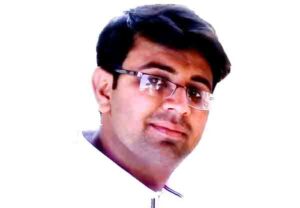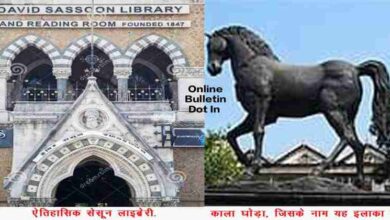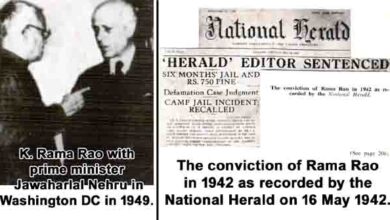ओबीसी के साथ क्रीमीलेयर का भेदभाव क्यों ? obeesee ke saath kreemeeleyar ka bhedabhaav kyon ?

©डॉ. सत्यवान सौरभ
परिचय– हिसार, हरियाणा.
(केवल आर्थिक आधार पर क्रीमी लेयर का निर्धारण करना गलत होगा। सामाजिक स्थिति में बढ़ोतरी, शिक्षा, रोजगार, आर्थिक हैसियत जैसे कई तरह के कारक मिलकर किसी की सामाजिक वंचना दूर करते हैं। अगर इस बहस को ईमानदारी से शांत करना है तो सरकार को चाहिए कि वह जातिगत जनगणना करवाए। उसके आधार पर नीति बनाए।)
आरक्षण, सात दशकों के बावजूद, हमारे विषम समाज में कई समूहों के लिए लाभों के समान वितरण में अनुवादित नहीं हुआ है। नतीजतन, कई समूहों को छोड़ दिया गया है। आरक्षण का लाभ नहीं उठा पाने वाले हाशिए के तबके के लोगों की जोरदार मांग है। इसके लिए कुछ नीति विकल्प तैयार करने की आवश्यकता है जो आरक्षण की मौजूदा प्रणाली को पूरा करने में सक्षम हो सकते हैं। इसका विस्तार से अध्ययन करने के लिए न्यायमूर्ति रोहिणी आयोग का गठन किया गया।
न्यायमूर्ति जी. रोहिणी आयोग की क्या टिप्पणियां हैं? समिति द्वारा दिए गए आंकड़े कुछ महत्वपूर्ण अवलोकन प्रदान करते हैं। पिछले पांच वर्षों के आंकड़ों के आधार पर आयोग ने निष्कर्ष निकाला कि केंद्रीय ओबीसी कोटा का 97% लाभ उसकी जातियों के 25% के तहत ही जाता है। 983 ओबीसी समुदायों – कुल का 37% – का केंद्र सरकार की नौकरियों और केंद्रीय विश्वविद्यालयों में प्रवेश दोनों में शून्य प्रतिनिधित्व है।
साथ ही, रिपोर्ट में कहा गया है कि ओबीसी के सिर्फ 10% लोगों ने 24.95% नौकरियां और प्रवेश अर्जित किए हैं। रोहिणी समिति का डेटा केवल उन संस्थानों पर आधारित था जो केंद्र सरकार के दायरे में आते हैं। समिति के पास राज्य और समाज के अधिक स्थानीय स्तरों पर विभिन्न सामाजिक समूहों की सामाजिक-आर्थिक स्थितियों पर शायद ही कोई सुपाठ्य डेटा हो। विभिन्न सामाजिक समूहों की सामाजिक-आर्थिक स्थिति से संबंधित सटीक आंकड़ों की आवश्यकता है। जाति आधारित आरक्षण समाज में ऊर्ध्वगामी गतिशीलता का अध्ययन करने के लिए महत्वपूर्ण हैं।
इस कमी को दूर करने और सिस्टम को अधिक जवाबदेह और इंट्रा-ग्रुप मांगों के प्रति संवेदनशील बनाने के लिए एक तंत्र की तत्काल आवश्यकता है। सबसे पहले, संदर्भ-संवेदनशील, साक्ष्य-आधारित नीति विकल्पों की एक विस्तृत विविधता विकसित करने की आवश्यकता है जिसे विशिष्ट समूहों की विशिष्ट आवश्यकताओं को पूरा करने के लिए तैयार किया जा सकता है।
दूसरा, हमें संयुक्त राज्य या यूनाइटेड किंगडम के ‘समान अवसर आयोग’ जैसी संस्था की आवश्यकता है जो जाति, लिंग, धर्म सहित विभिन्न समुदायों की सामाजिक-आर्थिक-आधारित जनगणना से संबंधित डेटा से वंचित सूचकांक बनाएं और उन्हें अनुकूल नीतियां बनाने के लिए रैंक करें। सामाजिक-आर्थिक जाति आधारित जनगणना भारत में सकारात्मक कार्रवाई व्यवस्था में कोई सार्थक सुधार शुरू करने के लिए एक आवश्यक पूर्व शर्त बन जाती है। तो, यह एक अच्छा पहला कदम के रूप में कार्य कर सकता है।
2015 में एनसीबीसी (राष्ट्रीय पिछड़ा वर्ग आयोग) ने आरक्षण नीति के मुफ्त कार्यान्वयन को सुनिश्चित करने के लिए क्रीमी लेयर पर प्रावधानों को व्यवस्थित करने के बजाय “ओबीसी के वर्गीकरण” की आवश्यकता पर जोर दिया। ओबीसी के साथ क्रीमीलेयर का भेदभाव क्यों? जबकि अनुसूचित जाति व् जनजाति में ऐसा नहीं है। ऐसे कौन से महत्वपूर्ण मुद्दे हैं जिन पर ध्यान देने की आवश्यकता है?
वार्षिक आय सीमा क्रीमी लेयर को निर्धारित करने वाले मापदंडों में से एक है लेकिन हम देखते हैं कि सितंबर 1993 से, इसे हर तीन साल में संशोधन के मानदंड के खिलाफ केवल पांच बार संशोधित किया गया था। इसके अलावा, जीडीपी मुद्रास्फीति, प्रति व्यक्ति आय और जीवन यापन की लागत में वृद्धि जैसे मानदंडों पर भी विचार किया जाना चाहिए।
हमें ओबीसी के पदों को शीघ्र भरने के लिए भी काम करना चाहिए। संसदीय समिति ने 27% को निर्धारित कोटे के मुकाबले 78 मंत्रालयों में ओबीसी कर्मचारियों को केवल 21.75% गठित किया। अमूर्त मुद्दों पर लड़ने के बजाय हमें ठोस मुद्दों पर ध्यान देना चाहिए जो ठोस परिणाम ला सकते हैं। सवाल केवल पिछड़े वर्ग के साथ इस भेदभाव का नहीं है बल्कि सालों से बैकलॉग से विभीन विभागों में खाली पड़े पदों का भी है। एक तरफ सामान्य वर्ग का कोई पद खाली नहीं तो दूसरी तरफ पिछड़ा वर्ग के असंख्य पदों को भरने का नाम तक नहीं लिया जा रहा। सुप्रीम कोर्ट भी यह मानती है कि संविधान की धारा 16(4) सभी पिछड़े वर्गों के हितों की रक्षा करती है।
संविधान निर्माता व भारत रत्न डॉ बाबा साहब भीमराव आंबेडकर जी ने भी 1949 में इस धारा के संबंध में यही कहा था। ओबीसी मामलों के जानकार के कोंडाला राव ने अपनी पुस्तिका ‘ओबीसी एंड स्टेट पालिसी’ में कहा है कि जहां तक प्रतिनिधित्व का सवाल है, वर्ष 2004 में ओबीसी की स्थिति एससी और एसटी से भी बदतर थी। और इसी आधार पर उनका कहना है कि संविधान का 77वां संशोधन ओबीसी के साथ भेदभाव करता है और इसलिए इसके आधार पर बनाई गई राज्य की नीतियाँ भी भेदभावपूर्ण हो गई है। इनमें बहुत सारी बातें उस समय स्पष्ट हो जाएंगी अगर जाति आधारित जनगणना को प्रकाशित कर दिया जाए।
केवल आर्थिक आधार पर क्रीमी लेयर का निर्धारण करना क्यों गलत है? इसका जवाब देते हुए इंदिरा साहनी मामले में जस्टिस जीवन रेड्डी ने एक बहुत ही मारके का उदाहरण दिया था। उन्होंने कहा था कि मान लीजिए कि एक लकड़ी का काम करने वाला बढ़ई कमाने के लिए खाड़ी के देशों में जाता है। हां वह कैसा भी काम करे लेकिन भारत में विनिमय दर के मुताबिक उसकी कमाई अच्छी खासी दिखती है। तो इसका क्या निष्कर्ष निकालना चाहिए?
क्या इसका मतलब यह होना चाहिए कि उसके बच्चे को आरक्षण न दिया जाए? क्या इसका मतलब यह है कि उसकी सामाजिक स्थिति अच्छी हो गई? इन सवालों का जवाब ना में ही मिलेगा। इसलिए केवल आर्थिक आधार पर क्रीमी लेयर का निर्धारण करना गलत होगा। सामाजिक स्थिति में बढ़ोतरी, शिक्षा, रोजगार, आर्थिक हैसियत जैसे कई तरह के कारक मिलकर किसी की सामाजिक वंचना दूर करते हैं।
लेकिन कहीं से भी इस बंटवारे का आधार आर्थिक नहीं है। सुप्रीम कोर्ट ने अपने इस फैसले के साथ, कई दूसरे फैसलों के दौरान भी बात कही है कि उसे जातियों की स्थिति से जुड़े ठोस आंकड़े मुहैया करवाए जाएं तभी जाकर वह उचित निष्कर्ष निकाल पाएगा। इसलिए अगर क्रीमी लेयर की बहस बार-बार उठ रही है तो यह बहस जातिवार जनगणना से भी जाकर जुड़ती है। अगर इस बहस को ईमानदारी से शांत करना है तो सरकार को चाहिए कि वह जातिगत जनगणना करवाए। उसके आधार पर नीति बनाए।

Dr Satywan Saurabh
Why is there discrimination of creamy layer with OBC?
(It would be wrong to determine the creamy layer only on the basis of economics. Many factors like increase in social status, education, employment, economic status together remove one’s social deprivation. If this debate is to be honestly pacified then the government has to He should get the caste census done. Based on that, make a policy.)
Reservation, despite seven decades, has not translated into equitable distribution of benefits for many groups in our heterogeneous society. As a result, many groups have been abandoned. There is a strong demand from the marginalized sections of the people who are not able to avail the benefits of reservation. For this there is a need to formulate some policy alternatives which may be able to complement the existing system of reservation. The Justice Rohini Commission was constituted to study it in detail.
Justice G. What are the comments of Rohini Commission? The data given by the committee provides some important observations. Based on the data of the last five years, the Commission concluded that 97% of the Central OBC quota benefits go to 25% of its castes. 983 OBC communities – 37% of the total – have zero representation in both central government jobs and admission to central universities.
Also, the report states that just 10% of OBCs have earned 24.95% jobs and admissions. The Rohini Committee data was based on only those institutions that come under the purview of the central government. The committee has hardly any legible data on the socio-economic conditions of various social groups at the state and more local levels of society. There is a need for accurate data relating to the socio-economic status of different social groups. Caste based reservations are important to study the upward mobility in the society.
There is an urgent need for a mechanism to address this shortcoming and make the system more accountable and responsive to intra-group demands. First, there is a need to develop a wide variety of context-sensitive, evidence-based policy options that can be tailored to meet the specific needs of specific groups.
2 Do it. Socio-economic caste based census becomes a necessary pre-condition for initiating any meaningful reforms in affirmative action system in India. So, it can act as a good first step.
The NCBC (National Commission for Backward Classes) in 2015 stressed on the need for “classification of OBCs” instead of streamlining the provisions on the creamy layer to ensure free implementation of the reservation policy. Why the creamy layer discriminates against OBCs? Whereas it is not so in Scheduled Castes and Scheduled Tribes. What are the important issues that need attention?
The annual income limit is one of the parameters determining the creamy layer but we see that from September 1993, it was revised only five times against the norm of revision every three years. In addition, parameters such as GDP inflation, per capita income and increase in cost of living should also be considered.
We should also work to fill up the posts of OBCs at the earliest. The parliamentary committee constituted only 21.75% of OBC employees in 78 ministries against the quota fixed at 27%. Instead of fighting on intangible issues, we should focus on concrete issues which can bring concrete results. The question is not only about this discrimination against the backward classes but also about the posts lying vacant in various departments from the backlog for years. On the one hand, there is no vacancy for the general category and on the other hand, the name of filling up the innumerable posts of the backward classes is not being taken. The Supreme Court is also of the view that Article 16(4) of the Constitution protects the interests of all backward classes.
The framer of the constitution and Bharat Ratna Dr Babasaheb Bhimrao Ambedkar had also said the same thing in 1949 regarding this section. OBC affairs expert K Kondala Rao, in his book ‘OBC and State Policy’, has said that as far as representation is concerned, in 2004, the position of OBCs was worse than that of SCs and STs. And on this basis he says that the 77th Amendment of the Constitution discriminates against OBCs and therefore the state policies made on its basis have also become discriminatory. Many of these things will become clear when the caste based census is published.
Why is it wrong to determine the creamy layer only on economic grounds? Responding to this, Justice Jeevan Reddy gave a very striking example in the Indira Sawhney case. He had said that suppose a woodworker goes to the Gulf countries to earn a carpenter. Yes, no matter how he works, but according to the exchange rate in India, his earnings look good. So what should be the conclusion from this?
Should this mean that her child should not be given reservation? Does this mean that his social status has improved? The answer to these questions will be found in no. Therefore, it would be wrong to determine the creamy layer only on economic grounds. Various factors like increase in social status, education, employment, economic status together remove one’s social deprivation.
But nowhere is the basis of this division economic. Along with this decision, the Supreme Court has also said during many other decisions that it should be provided with concrete data related to the status of castes, only then it will be able to draw a proper conclusion. Therefore, if the debate on the creamy layer is being raised again and again, then this debate is also linked to the caste-wise census. If this debate is to be honestly pacified, then the government should conduct a caste census. Make a policy based on that.















